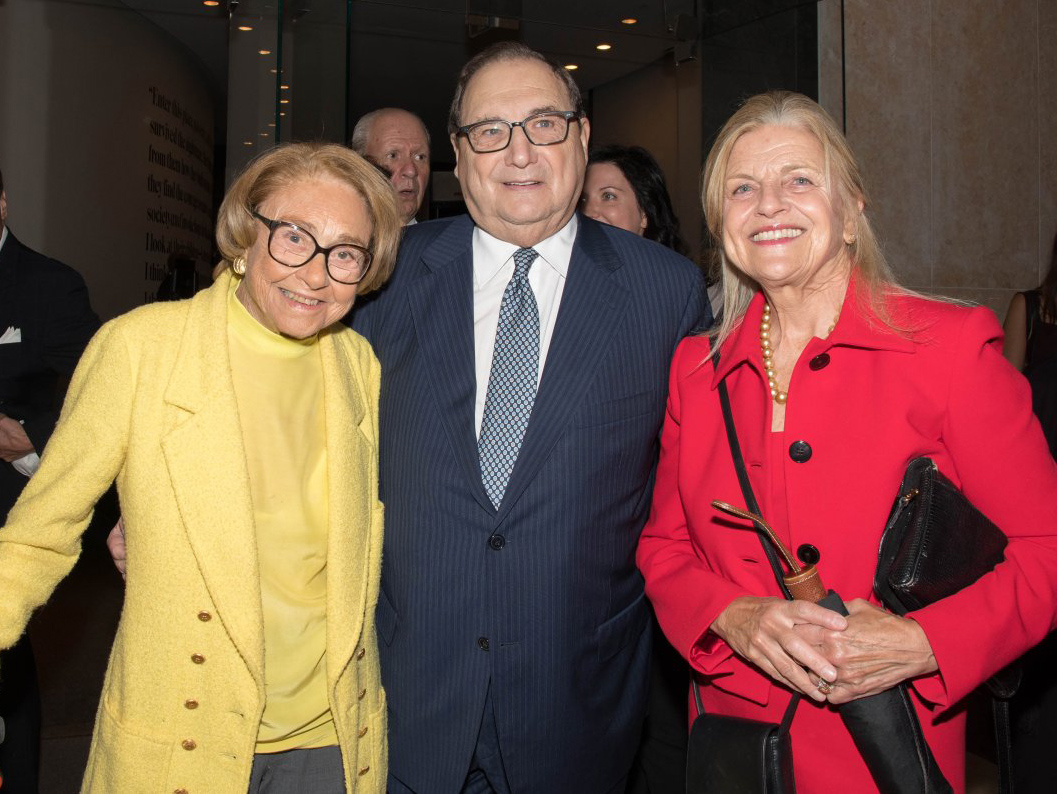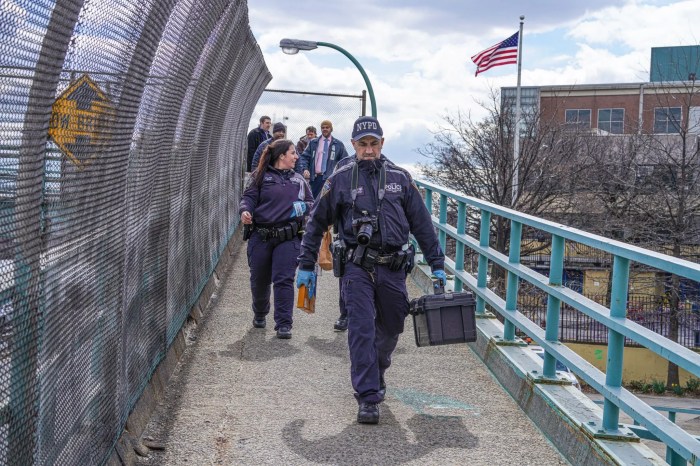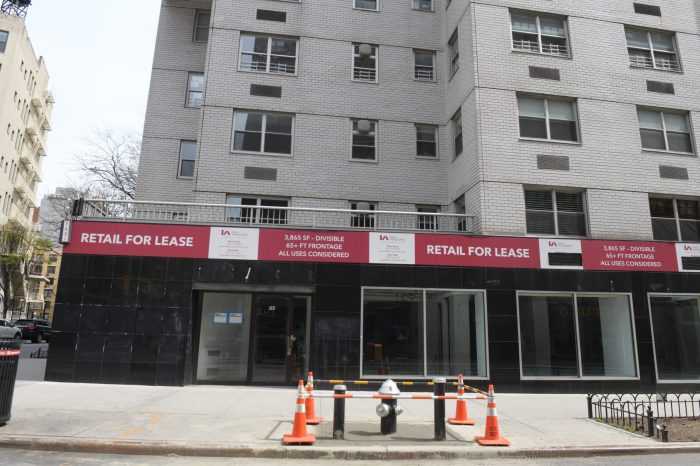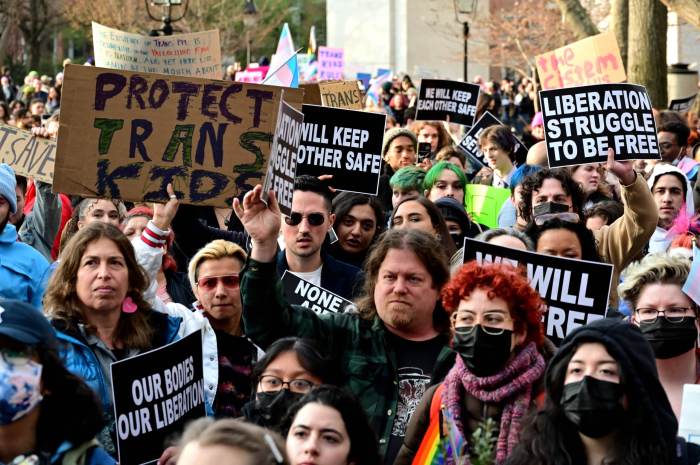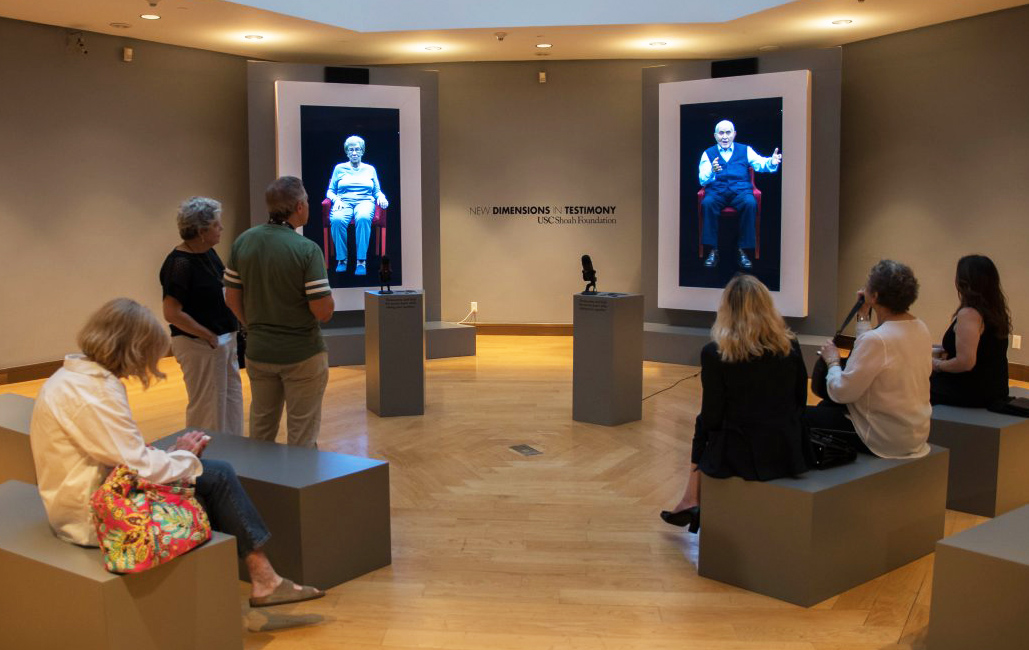
The Museum of Jewish Heritage’s interactive exhibit New Dimensions in Testimony allows visitors to ask questions to Holocaust survivors Pinchas Gutter and Eva Schloss and receive natural answers from their holographic avatars.
BY LEVAR ALONZO
The Museum of Jewish Heritage marked its 20th anniversary on Sept. 13 with the opening of a new exhibit meant to preserve the eyewitnesses of history to educate future generations.
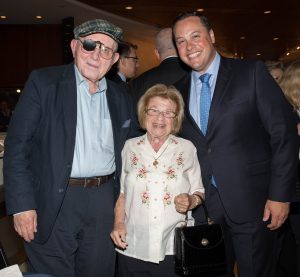
Left to right, Pinchas Gutter with museum trustee Dr Ruth Westheimer, and museum president Michael Glickman.
The interactive exhibit, New Dimensions in Testimony, allows visitors to virtually converse with holograms of two Holocaust survivors — Pinchas Gutter and Anne Frank’s stepsister Eva Schloss — in an initiative started by the University of Southern California Shoah Foundation, which was formed by director Steven Spielberg to further the remembrance of the Holocaust.
The high-tech exhibit ensures that the museum will stay true to its full name — the Museum of Jewish Heritage: A Living Memorial to the Holocaust — far into the future, according to the museum’s president and CEO.
“Most times, we are just able to read of these stories” said Michael Glickman. “How remarkable is it to be greeted and have a conversation with, and see the emotions of these survivors telling their story.”
New Dimensions uses sophisticated artificial-intelligence algorithms to interpret visitors’ questions and mine extensive interviews filmed with the survivors and allow their holographic avatars to provide natural answers. It will offer a personal experience of their eyewitness testimony of the Holocaust long after the last survivors have passed away. Glickman said that even 100 years from now, future generations will be able to hear the first-hand accounts of the horrors, and also the feeling of liberation felt by the survivors.
And the exhibit will continue to get better for as long as Gutter and Schloss are around to participate, because USC tracks the questions that the avatars can’t answer and updates the library of responses so the next time a similar question is asked the answer will be in the database.
Gutter’s database already has responses to about 20,000 to 30,000 possible questions, according to the museum. His story is harrowing — surviving numerous death marches and six concentration camps, but he conveys palpable joy when recalling how he was liberated from Theresienstadt by the Soviet Army in 1945. His avatar will even joyfully belt out songs from his childhood on request.
The experience allows visitors to see the sadness of these survivors when asked for a memory that stood out in their minds. The interactive installation captures the tears and draws in the visitor as Gutter and Schloss recollect on the most painful time in their lives.
“My testimonies are the most important way to capture the history, my history,” Schloss’s hologram answers when asked what was her reason for wanting to be part of the project. Schloss is a survivor of Auschwitz-Birkenau concentration camp. In 1942, her family went into hiding, but in 1944 — on her 15th birthday — they were betrayed, separated and sent to the death camps.
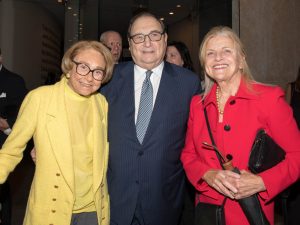
MJH Center for the Study of Anti-Semitism head Abraham Foxman, center, with museum trustee Gladys Pickman, at left, and Teresa Pickman.
The museum invited many Holocaust survivors and their families to its Battery Park City campus for the unveiling of New Dimensions, and they sat in the front row as guests of honor as speakers explained the new exhibit and extolled the mission of the museum and their importance to it. Speakers included Abraham Foxman, former long-time national director of the Anti-Defamation League and now head of the MJH Center for the Study of Anti-Semitism, and museum board chairman Bruce Ratner. Lawyer Judah Gribetz read a letter from former Manhattan District Attorney Robert Morgenthau, who could not attend. Museum board trustee Dr. Ruth Westheimer — who lost both her parents to the Holocaust — was also there, taking in the exhibits and viewing the museums extensive collection of artifacts.
“It was wonderful, it was good seeing the exhibit but you know everyone has their own stories to tell, I was in Auschwitz myself,” said survivor Peri Hirsch. “Seeing this exhibit, I would also like to give the museum poems and photos I have to keep the memories.”
Glickman said that the museum may even try to expand the New Dimensions exhibit by adding more stories of survivors.
As part of the 20th-anniversary commemoration, the museum also hosted talks with Omer Malkin, the son of Peter Malkin — the legendary Israeli intelligence agent who directed the surveillance that led to the capture of Nazi war criminal Adolf Eichmann in Buenos Aires — and Michael Goldman-Gilead, a member of the special Israeli police investigative unit created to gather evidence for the 1961 Jerusalem trial of Eichmann, which finally brought him to justice 16 years after the war.
The museum is currently hosting the exhibit Operation Finale: The Capture and Trial of Adolf Eichmann, which recounts the infamous Nazi fugitive’s discovery and capture by Mossad, the Israeli national intelligence agency, and the subsequent trial that led to Eichmann’s death by hanging in December 1961. The exhibit features declassified artifacts from Mossad that illustrate a historic moment of justice that unfolded more than 50 years ago.
Both Operation Finale and New Dimensions offer visitors a powerful and visceral connection to the Holocaust and its aftermath that goes far beyond what you can get from history books, according to one museum volunteer.
“Everything here is a completely different experience from just sitting and reading — you get to see, listen, and interact with emotions and history,” said Councilman Rory Lancman (D–Queens), as he guided on a tour of the museum.



